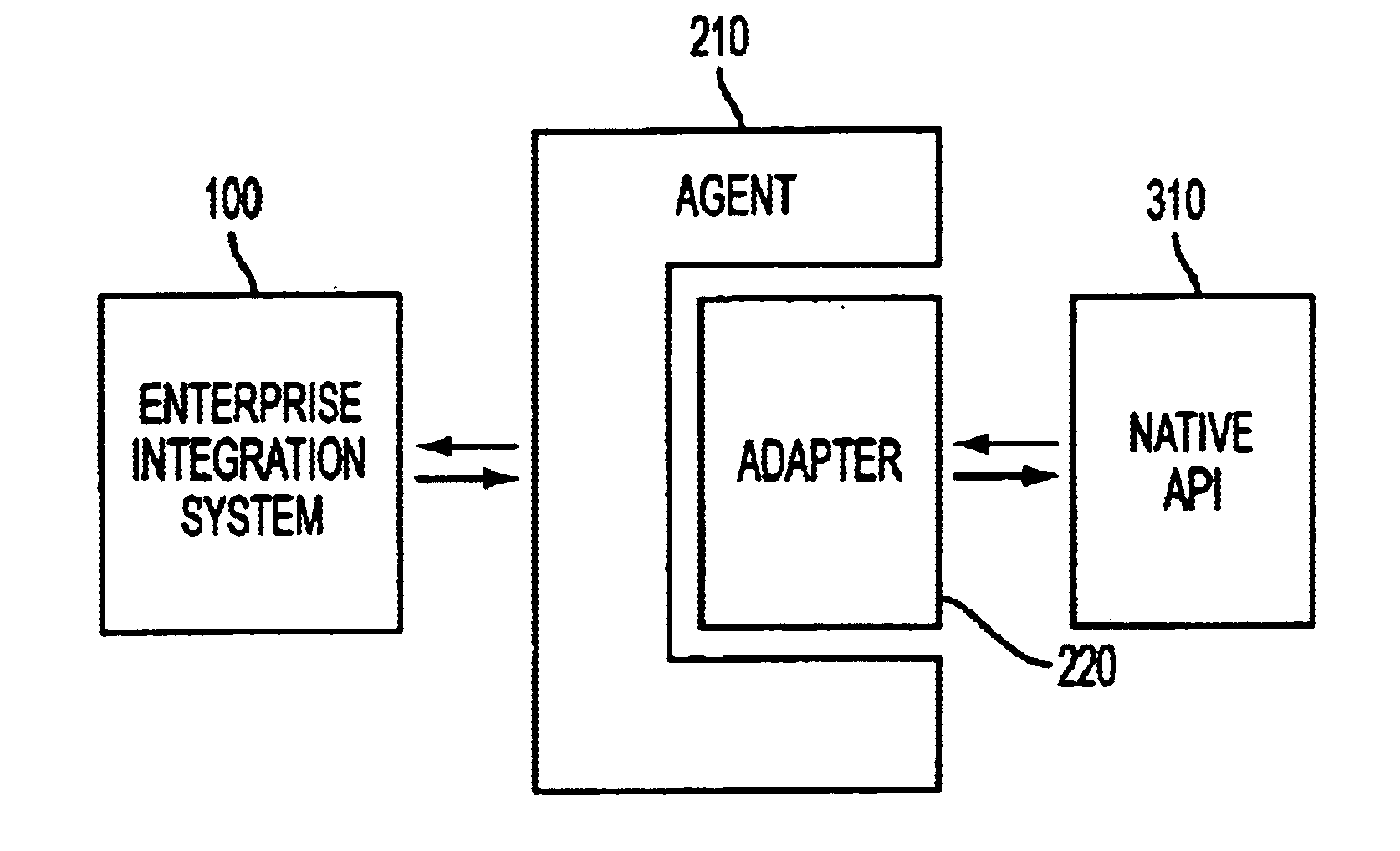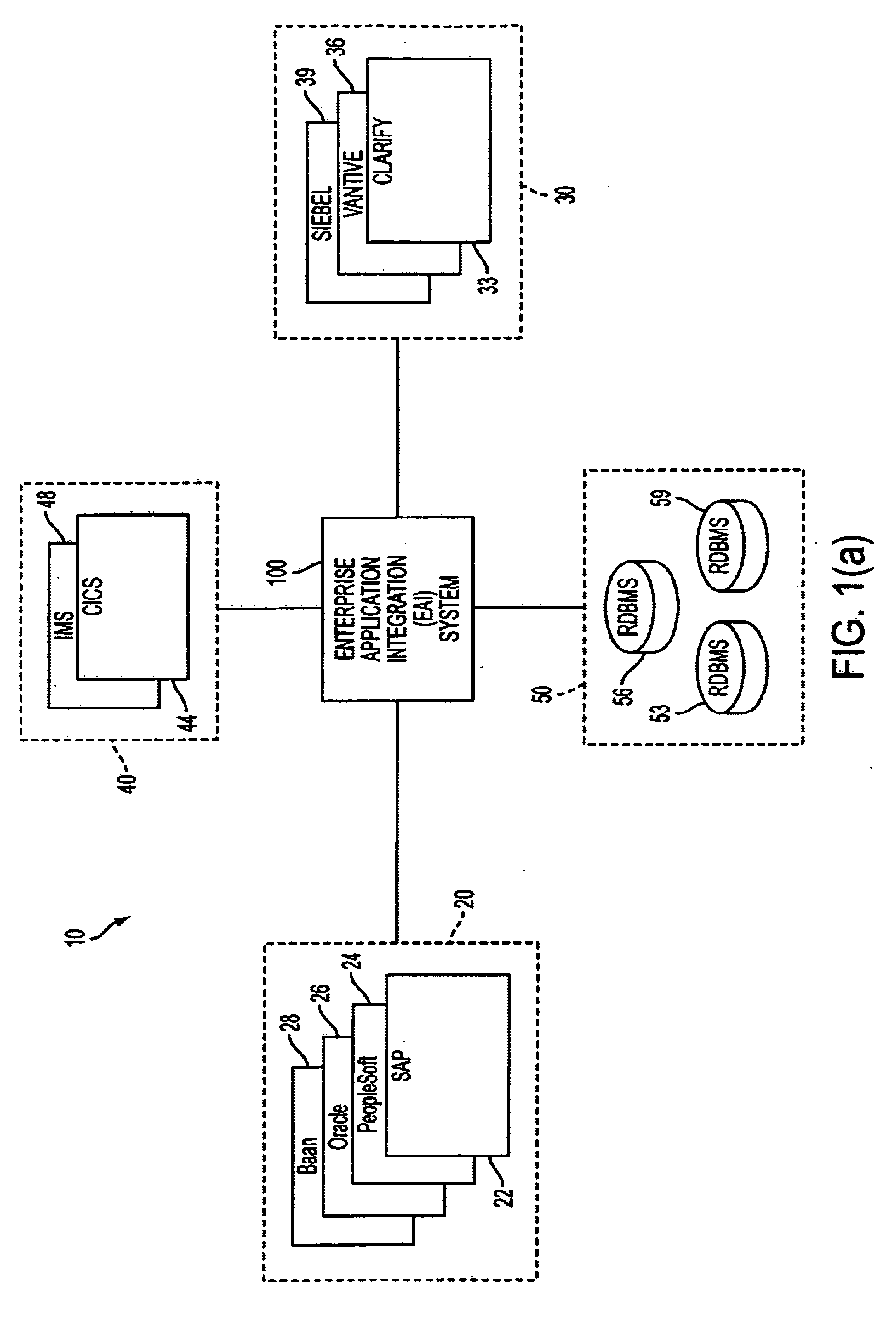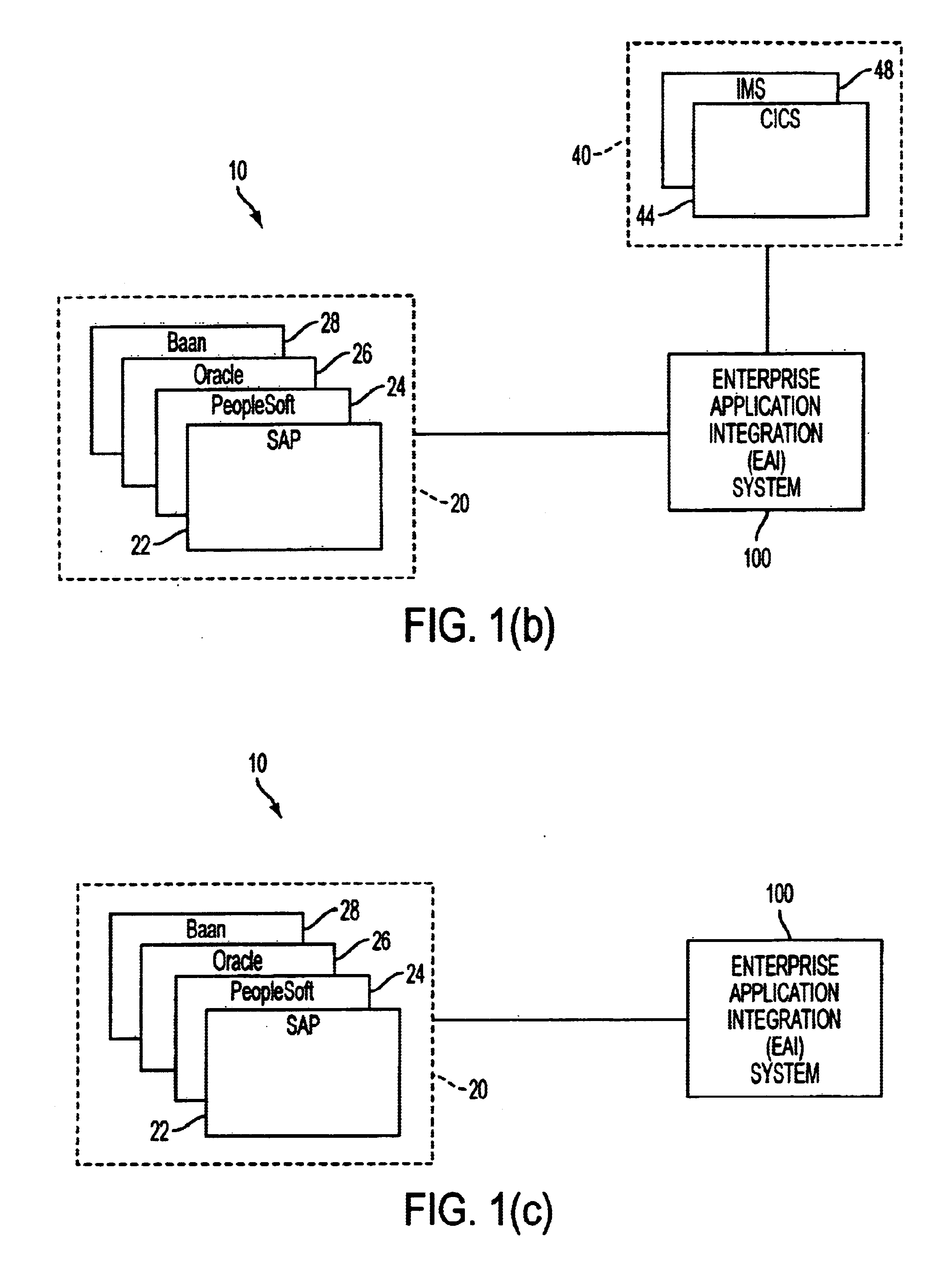Extensible distributed enterprise application integration system
a distributed enterprise and integration system technology, applied in the direction of interprogram communication, program control, multi-programming arrangements, etc., can solve the problems of clogging corporate arteries, preventing senior management, and affecting business, and achieve the effect of increasing system overhead
- Summary
- Abstract
- Description
- Claims
- Application Information
AI Technical Summary
Benefits of technology
Problems solved by technology
Method used
Image
Examples
example
A message item named CustID is defined as a String object that contains a number in the format ##,###. For another message, the user need the value of CustID in a Long object. The user would enter the function as follows:
stringToLong (MsgDef.CustID, "##,###")
If the value of CustID were "10,321", the function would return a Long object whose value is 10321.
subarray
This function finds a ByteArray object within another ByteArray object and returns the found ByteArray object.
If the function cannot find the ByteArray, it returns a null value.
Example A message item named Array is defined as a ByteArray object. For another message, the user need the first eight bytes of Array in a ByteArray object. The user would enter the function as follows:
subArray (0, 7, MsgDef.Array)
This function finds a String object within another String object and returns the found String object.
If the function cannot find the String, it returns a null value.
trim
This function removes white space before and...
PUM
 Login to View More
Login to View More Abstract
Description
Claims
Application Information
 Login to View More
Login to View More - R&D
- Intellectual Property
- Life Sciences
- Materials
- Tech Scout
- Unparalleled Data Quality
- Higher Quality Content
- 60% Fewer Hallucinations
Browse by: Latest US Patents, China's latest patents, Technical Efficacy Thesaurus, Application Domain, Technology Topic, Popular Technical Reports.
© 2025 PatSnap. All rights reserved.Legal|Privacy policy|Modern Slavery Act Transparency Statement|Sitemap|About US| Contact US: help@patsnap.com



